In Northwest Indiana, Jasper-Pulaski Fish and Wildlife Area serves as a migratory stop over for tens of thousands of Greater Sandhill Cranes. The birds have been regulars since before the property was established in 1929.
On a recent morning with a full moon setting and the sun rising, waves of small groups of Sandhill Cranes lifted into the air from their overnight resting place in Goose Pasture – off to feed in nearby harvested fields for the day. Local photographer Mike Malik hadn’t planned on being at Jasper Pulaski that morning, but was inspired by an early morning ritual.
“I walked outside with the dog when I let her out and I noticed that the moon was pretty full. So I thought I might be able to get a decent sillouette of the birds across the moon.”
Malik said he was fairly sure he got a few good shots. He says as his photography has become more important to him, so has photographing the Sandhill Cranes.
“I’ve been down in this area since ’87. And I come at least once a year – twice a year – but this year I’ve been out here pretty much every 2-3 days.”
Jasper-Pulaski property manager Jim Bergens says in addition to their distinctive calls, the birds do their courtship dances year round.
“A lot of people will see them pick up a glob of dirt or a clump of grass and they throw it up over their shoulder. That’s part of their courtship display. And then they bow and call. The unison call – when the male and female call together in unison – they’re normally facing each other and their heads and necks are up.”
The fish & wildlife manager says most scientists agree that in the 1930s there were only about 300 total nesting pair of the Eastern Greater Sandhill Cranes still around. But by the 1970s when Jasper Pulaski did their first count – there were 2,500 individual birds.
“Fortunately, the Sandhill Cranes were able to adjust to things that man did to the landscape. You know, farming, cities, roads – all kinds of everything – but primarily farming.”
Today, Bergens says there are around 30,000 Sandhills at JP each spring and fall.
“You know, not all species were able to adjust like that. The Whooping Crane, which was probably never present in large numbers for a variety of reasons, has not been able to increase.
Efforts continue to boost the number of migrating Whooping Cranes. Bergens says now is the time you might see a few at Jasper Pulaski because they tend to migrate later than Sandhill Cranes. The Whoopers head south in mid to late November.
A large 2-story viewing platform at Goose Pasture is where nature lovers can use permanent spotting scopes to catch a view like Alice Slope who recently moved to northwest Indiana from the Indianapolis area.
“It’s probably been 15 years since I’ve been here. It’s just an enjoyable, great, natural viewing area and I wanted to see it again,” Slope said
Brenda Mays, all the way up from Evansville, said she and her husband have been longing to see the Sandhills.
“You know we’re just nature lovers, just love the country and love being outside," she said. "We’ve never seen the Sandhill Cranes."
David Mays was impressed by the cranes.
“The beautiful birds. It’s just something I’ve never seen before and was told about it and just couldn’t wait to see it,” he said.
You can find more information online about the Sandhill Cranes at Jasper-Pulaski Fish and Wildlife area at http://www.in.gov/dnr/fishwild/3109.htm
 DONATE
DONATE


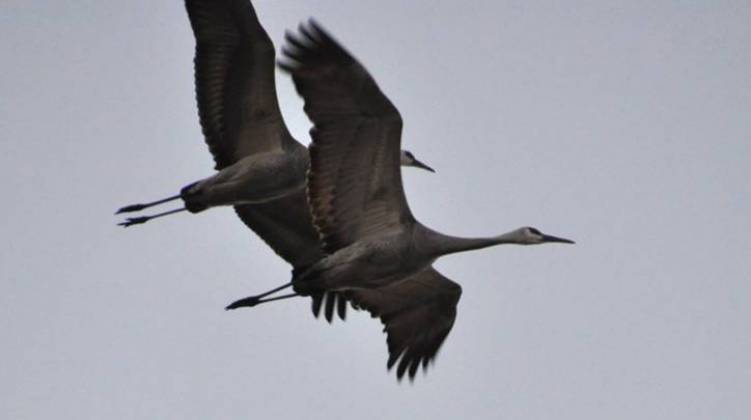
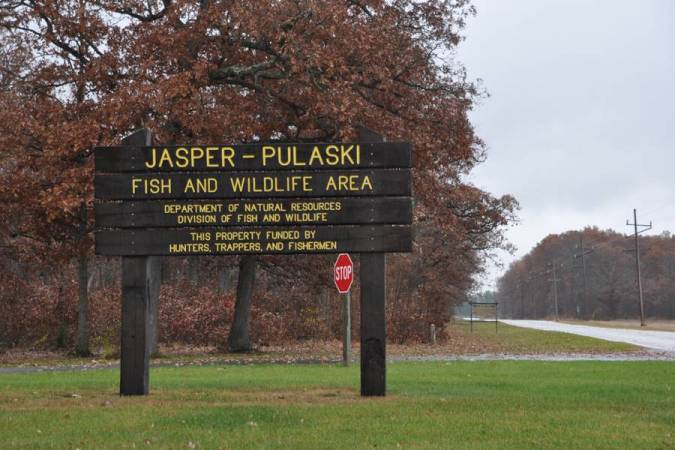
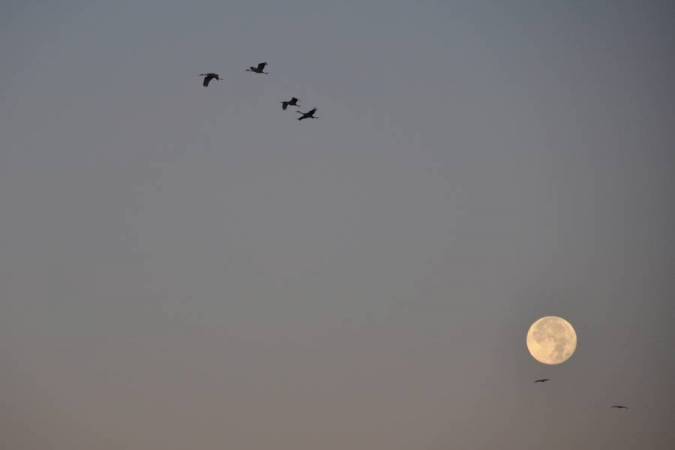
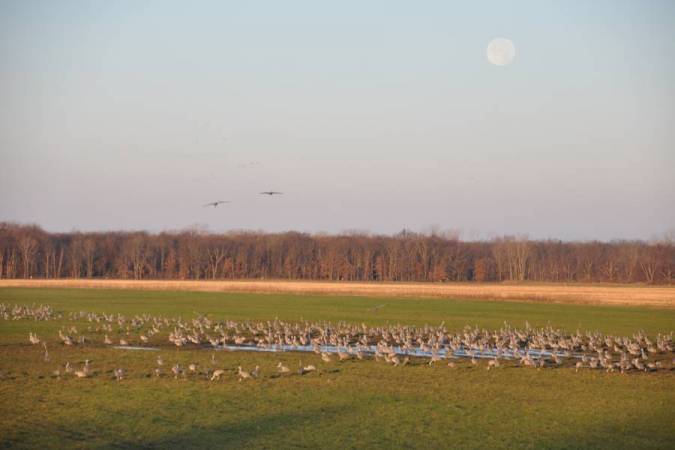
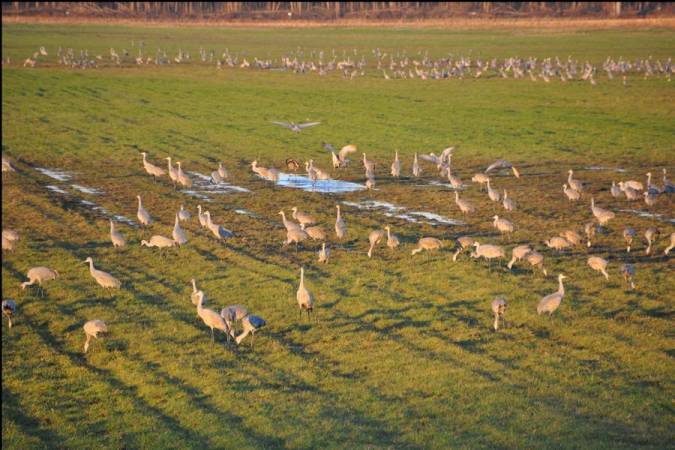
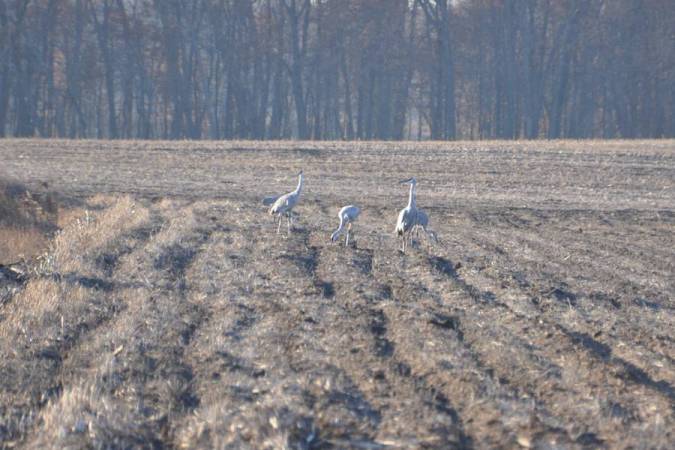
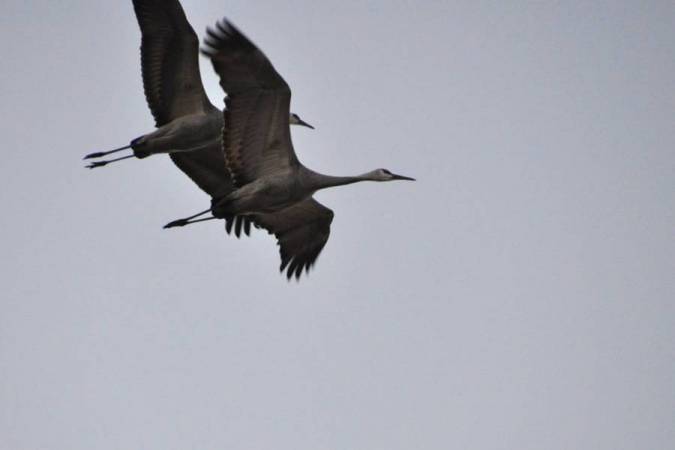
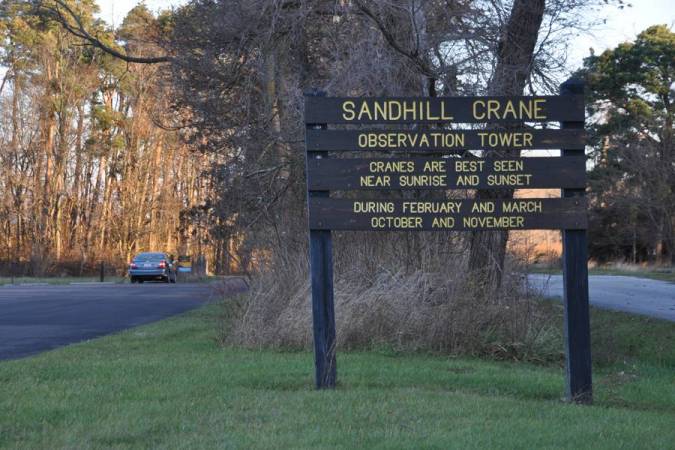




 Support WFYI. We can't do it without you.
Support WFYI. We can't do it without you.